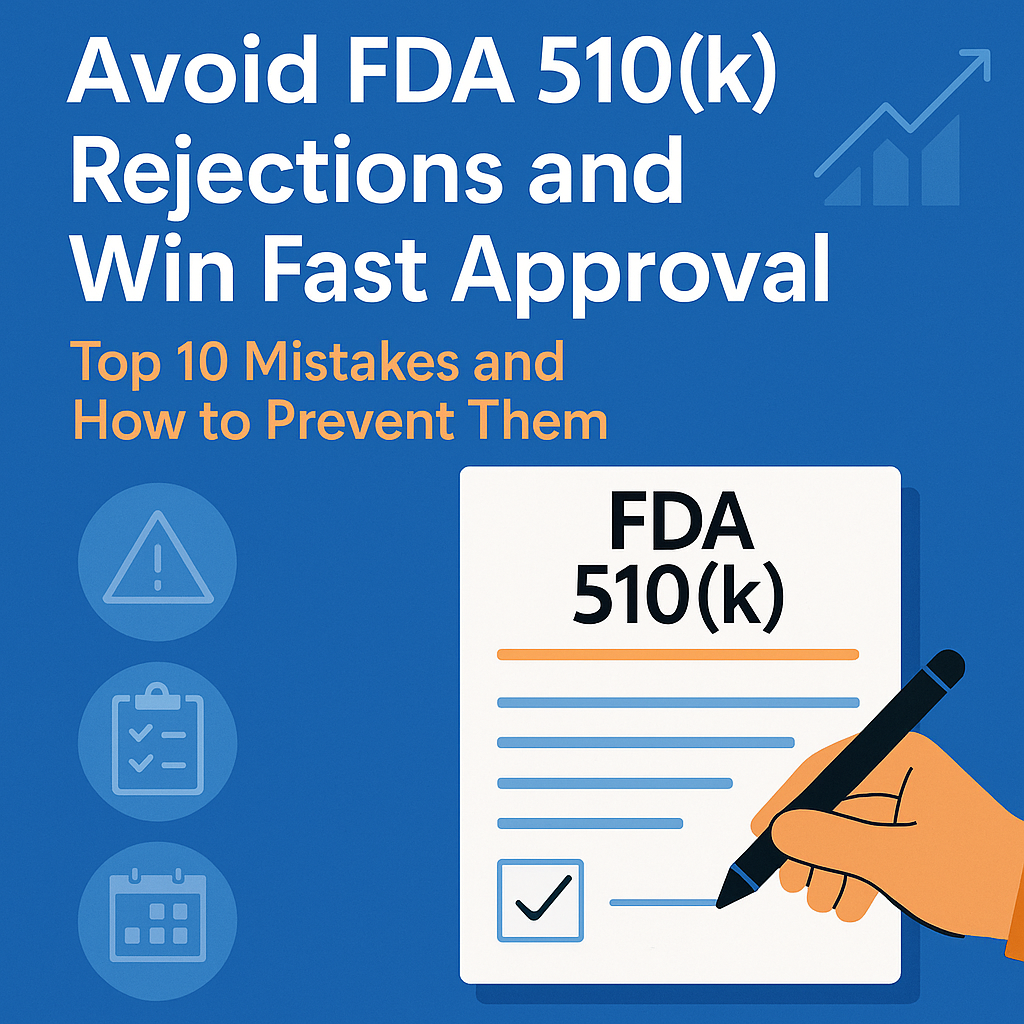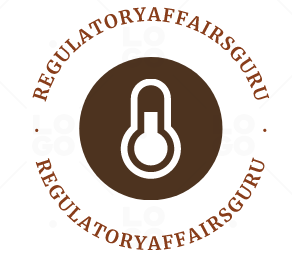
Your Roadmap to a Successful FDA 510(k) Submission Without Painful Setbacks
1️⃣ Incomplete Submission Package
❌ What Goes Wrong (In-Depth):
FDA uses the Refuse-to-Accept (RTA) checklist to review 510(k) submissions for completeness before substantive review. Without key administrative or technical components, the submission is rejected outright without review, and delays are incurred immediately.
Missing pieces, more frequently than not, include:
FDA Form 3514 (Submission Cover Sheet): Required to classify route your submission.
FDA Form 3881 (Statement of Intended Use): Required to confirm use intent.
Cover Letter: Gives background on your device and submission type.
Table of Contents: Otherwise, reviewers will overlook essential sections.
Labeling documents: These include device labels, IFUs, and package labels.
Device Description: You are required to thoroughly describe your device for the reviewer.
Missing performance, biocompatibility, sterilization, and other testing data applicable to your device.
✅ How to Avoid
Use the FDA’s official RTA checklist (below) systematically before submission.
Use FDA eSTAR, which will automatically identify missing administrative and technical information.
Have multiple team members sign an internal RA/QA checklist SOP to provide proof of all contents before submission.
Reference: FDA 510(k) Refuse to Accept Policy
2️⃣ Predicate Device Issues
❌ What Goes Wrong (In Detail):
510(k) clearance involves demonstrating substantial equivalence to a legally marketed predicate device. Denials are usually because of:
The predicate device serves a different purpose (e.g., your device is in the ICU for glucose monitoring, but the predicate is home use).
The predicate device has varying technological capabilities (e.g., you do Bluetooth data transmission, but the predicate does wired connectivity without apparent reason).
Missing or incorrect 510(k) number, manufacturer, or product code.
Predicate that the device is not on the market or that the device is obsolete unreasonably.
✅ How to Avoid:
Look for a legally marketed, available predicate in the FDA 510(k) Database.
Check for similarities of intended use and verify technological differences and similarities.
Make a readable Substantial Equivalence Table documenting feature-by-feature comparison and establishing differences using testing or literature.
Use a De Novo submission rather than attempting to cajole equivalence if the proper predicate is not found.
3️⃣ Poor Device Description
❌ What Goes Wrong (In-Depth):
A poor or incomplete description of your device leaves the FDA reviewer uncertain about how it works, what it is constructed of, and what safety issues may exist.
Common problems:
No clear functional description.
Engineering diagrams or good pictures missing.
No reference to the materials used.
No operation explanation.
For software devices: No lacking explanations of the architecture, the logic, or features.
Clean narrative of how the device works, what its purpose is, and how it performs its intended task.
High-quality images of the device from multiple directions.
Engineering diagrams with annotation of dimensions, ports, and key components.
Very detailed material details, e.g., patient-contacting materials.
For software or SaMD:
System architecture diagrams.
High-level algorithm and function descriptions.
Data flow diagrams.
4️⃣ Labeling Noncompliance
❌ What Goes Wrong (Detailed):
Labeling differences are the most frequent reasons for RTA or AI requests. Errors are:
Differences in labeling Indications for Use from FDA Form 3881.
Unsupported labeling statements (e.g., “pain-free,” “faster on the market”).
Omissions of required labeling components:
Manufacturer’s name and address.
Warnings, precautions, and contraindications.
Instructions for Use (IFU).
Unique Device Identifier (UDI) placeholder.
✅ Preventing:
Check your labeling content with FDA Form 3881 and your intended use.
See 21 CFR Part 801 for labeling requirements.
Remove unsubstantiated marketing statements unless they are supported by data in your filing.
Provide draft IFUs and labels for each device configuration filed.
???? Reference: 21 CFR Part 801 – Labeling Requirements
5️⃣ Inadequate Performance Data
❌ What Goes Wrong (Detailed):
Performance data indicates your device performs as designed under expected conditions and meets its design specifications. Issues are:
Bench test protocol and reports are missing.
Failure to conduct comparative testing to predicate.
Tests that do not comply with FDA-recognized standards.
Reporting results without pass/fail criteria, analysis, or context.
✅ How to Avoid:
Develop a performance testing plan according to FDA-recognized standards and worst-case conditions.
Includes:
Protocols with objectives, methods, and acceptance criteria.
Results are presented in clear graphs or tables.
Comparative testing of predicate devices.
Analysis indicating that the device complies with design specifications.
6️⃣ Missing or Insufficient Biocompatibility Data
❌ What Goes Wrong (Detailed):
For devices coming into contact with patients, there is a need for biocompatibility data to establish safety and prevent toxic or allergic reactions. Issues are:
Not testing to ISO 10993-1.
Providing out-of-date or irrelevant testing results.
Using non-GLP testing facilities or procedures.
Not providing a risk-based biocompatibility assessment.
✅ What to Avoid:
Use ISO 10993-1 as the starting point to decide on needed endpoints based on:
Contact time (e.g., short, long, permanent).
Type of contact (e.g., skin, mucosal, blood contact).
Supply a biocompatibility test matrix with completed test results.
Testing conducted in GLP-conform laboratories.
Supply complete test reports, including protocols, raw data, results, and conclusions.
???? Reference: FDA Biocompatibility Guidance
7️⃣ Inadequate Sterilization and Shelf-Life Validations
❌ What Goes Wrong (Detailed):
Sterile products require clear evidence that the sterilization process is valid and the product remains sterile and functional throughout its shelf life. Common mistakes:
No sterilization validation data was supplied.
Missing data for sterilization process and parameters.
No validation testing of packaging.
No shelf-life information (real-time or accelerated aging).
✅ How to Avoid:
Document and validate your sterilization process (e.g., EtO, Gamma, Steam).
Supply:
Sterilization validation procedure and outcome.
SAL confirmation (typically 10⁻⁶ for medical devices).
Packaging integrity test per ISO 11607.
Shelf-life testing by real-time and accelerated aging method with rationale.
8️⃣ Software Documentation Gaps
❌ What Goes Wrong (Detailed):
Devices with software or operating as SaMD need appropriate documentation to allow FDA to make decisions regarding reliability and safety. Mistakes are:
No Software Level of Concern determination.
No software architecture diagrams were provided.
Inadequate software risk analysis.
No verification and validation test data were provided.
No consideration for cybersecurity.
✅ How to Avoid:
Select your software level of concern (minor, moderate, or major).
Prepare:
Software architecture diagrams and functional descriptions.
Software risk analysis and mitigation plans.
Traceability matrices connecting requirements to testing.
Verification and validation test reports and protocols.
Handle cybersecurity by defining:
Encryption techniques
Access control
Refreshing policies
???? Reference: FDA Software Documentation Guidance
9️⃣ EMC and Electrical Safety Data Missing
❌ What Goes Wrong (In Detail):
The FDA needs proof of electromagnetic compatibility and safety for equipment with wireless communications or electrical parts. Problems are:
No testing by IEC 60601-1 (Electrical Safety) or IEC 60601-1-2 (EMC).
Only certificates are issued rather than complete test reports.
Testing was not performed under worst-case conditions of use.
How to Avoid:
Test your product to FDA-recognized standards:
IEC 60601-1 for the safety of electrical equipment.
IEC 60601-1-2 for EMC.
Use an accredited testing lab.
Supply:
Complete test protocols.
Raw test data.
Test results with pass/fail interpretation.
Test under representative conditions of typical and worst-case use.
???? Reference: FDA Recognized Standards Database
???? Poor Organization and Lack of Traceability
❌ What Goes Wrong (Detailed):
Despite having complete content in your submission, poor organization results in rejection or repeated AI requests:
Lack of a fixed Table of Contents or section identifiers.
Incongruent document, device name, or versioning title.
Incongruent information within sections:
Mismatch of indications for use within Form 3881, labeling, and summary.
Misaligned pagination or absence of bookmarks in e-submissions.
✅ How to Avoid:
Utilize the FDA’s eSTAR format and automatically establish a logical, well-organized submission to meet FDA expectations.
Have:
A Table of Contents with fixed section IDs.
Continuous page numbering throughout your submission.
Consistent model numbers, device names, and indications in reports.
Bookmarks and hyperlinks within PDFs for reviewer ease of navigation.
Conduct final internal QA consistency check before submission.
✅ Summary Table
Reason for Rejection Tanev What Goes Wrong How to Prevent
Missing documents administrative/technical documents missing Use RTA checklist, eSTAR, SOP checks
Predicate issues invalid predicate, incorrect classification Check against 510(k) database
Inadequate device description unclear about function/design Detailed narrative, diagrams, materials
Labeling discrepancies
Misaligned labels, absent content
Synchronize labeling with Form 3881
Absent performance data
No testing, incomplete
Run complete tests, compare data
Absent biocompatibility data
No ISO 10993 tests
Conduct tests, GLP facilities
Absent sterilization data
No shelf-life or validation
Include SAL, validation, packaging data
Absent software documentation
Without V&V, architecture
Create FDA-recommended software documentation
Absent EMC/safety testing
Without IEC 60601 test reports
Conduct and submit complete reports
Poor organization
Incomplete, inconsistent data
Apply eSTAR, organized TOC, QA review
???? Final Thoughts
FDA rejection of a 510(k) submission does not generally reflect your device’s performance but avoids process and document inconsistencies.
When you address these ten areas in order, you will:
✅ Reduce the chances of rejection or delay.
✅ Shorten your time to market for your device.
✅ Enhance your investor and partner credibility.
✅ Streamline your internal RA/QA process for subsequent submissions.
